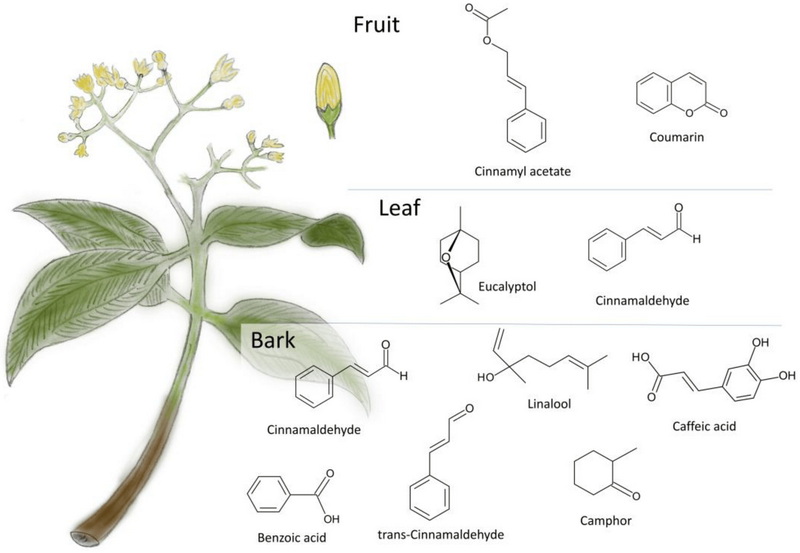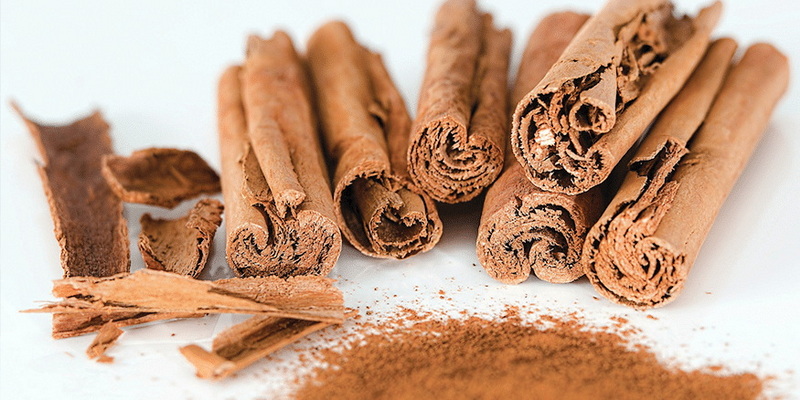Content Menu
● Introduction to Cinnamon
>> Cinnamon's Health Benefits
>> Cinnamon in Traditional Medicine
● Cinnamon Bark
>> Production Process
>> Benefits of Cinnamon Bark
>> Cinnamon Bark in Recipes
● Cinnamon Extract
>> Production Process
>> Benefits of Cinnamon Extract
>> Cinnamon Extract in Cooking
● Comparison: Cinnamon Extract vs. Cinnamon Bark
● Which is Better?
● Conclusion
● FAQs
>> 1. What are the primary differences between cinnamon extract and cinnamon bark?
>> 2. Which form of cinnamon is more beneficial for health?
>> 3. How do I choose between cinnamon powder and cinnamon extract powder?
>> 4. Can cinnamon extract be used in aromatherapy?
>> 5. Is cinnamon safe to consume in large quantities?
● Citations:
Cinnamon, a spice derived from the bark of the cinnamon tree, has been valued for centuries for its culinary and medicinal properties. Two popular forms of cinnamon are cinnamon extract and cinnamon bark. While both are derived from the same plant, they differ significantly in terms of production, usage, and benefits. In this article, we will delve into the differences between cinnamon extract and cinnamon bark, exploring their unique characteristics, applications, and whether one is superior to the other.

Introduction to Cinnamon
Cinnamon is renowned for its warm, sweet, and spicy aroma, making it a staple in many cuisines around the world. It is obtained from the inner bark of the cinnamon tree, primarily from species like Cinnamomum verum (Ceylon cinnamon) and Cinnamomum cassia (Chinese cinnamon). Cinnamon contains compounds like cinnamaldehyde, which is responsible for its distinctive flavor and aroma, as well as its medicinal properties.
Cinnamon's Health Benefits
Cinnamon is rich in antioxidants and has been linked to several health benefits, including:
- Antidiabetic Properties: Cinnamon may help lower blood sugar levels and improve insulin sensitivity. Studies have shown that consuming cinnamon regularly can lead to significant improvements in blood glucose control for individuals with type 2 diabetes.
- Antimicrobial and Anti-inflammatory Effects: It has been shown to inhibit the growth of harmful bacteria and reduce inflammation. This makes cinnamon a potential natural remedy for infections and inflammatory conditions.
- Cardiovascular Health: Cinnamon may help reduce cholesterol levels and improve heart health by lowering triglycerides and LDL cholesterol.
Cinnamon in Traditional Medicine
Cinnamon has been used in traditional medicine for centuries, particularly in Ayurvedic and Chinese medicine. It is valued for its warming properties and is often used to treat digestive issues, colds, and other ailments.
Cinnamon Bark
Cinnamon bark is the most traditional form of cinnamon used in cooking and medicine. It is harvested from the inner bark of the cinnamon tree, which is carefully stripped, dried, and rolled into the familiar cinnamon sticks. These sticks can be ground into powder or used whole in cooking.
Production Process
The production of cinnamon bark involves a labor-intensive process:
1. Harvesting: Cinnamon trees are harvested after four years of growth. The timing of harvesting is crucial to ensure the best flavor and quality.
2. Peeling: The outer bark is removed to expose the inner bark. This process requires skill to avoid damaging the delicate inner bark.
3. Drying: The inner bark is dried in the sun until it curls into sticks. This step helps preserve the bark and enhance its aroma.
4. Grinding: The sticks are ground into powder for use in cooking. Ground cinnamon is versatile and can be used in a wide range of recipes.
Benefits of Cinnamon Bark
- Flavor and Aroma: Cinnamon bark provides a strong, warm, and spicy flavor, making it ideal for baking and cooking. It adds depth and complexity to dishes like cakes, cookies, and curries.
- Medicinal Properties: It contains cinnamaldehyde, which offers antimicrobial and anti-inflammatory benefits. Cinnamon bark tea is often consumed for its soothing effects on the digestive system.
Cinnamon Bark in Recipes
Cinnamon bark is a staple in many cuisines, particularly in desserts and savory dishes. Here are a few examples of how cinnamon bark can be used:
- Apple Pie: Ground cinnamon from the bark is essential for the classic apple pie filling, adding warmth and depth to the fruit.
- Curries: Whole cinnamon sticks are often used in Indian and Southeast Asian curries to add a rich, aromatic flavor.

Cinnamon Extract
Cinnamon extract is a more concentrated form of cinnamon, typically made by soaking cinnamon bark in alcohol and then straining out the solids. This process extracts the essential oils and other active compounds, resulting in a liquid with a stronger flavor than ground cinnamon.
Production Process
The production of cinnamon extract involves:
1. Soaking: Cinnamon bark is soaked in alcohol to extract its active compounds. The type of alcohol used can affect the quality of the extract.
2. Straining: The solids are strained out, leaving a concentrated liquid extract. This extract can be further processed into a powder or oil.
Benefits of Cinnamon Extract
- Concentrated Flavor: Cinnamon extract has a more intense flavor than ground cinnamon, making it ideal for recipes where a strong cinnamon taste is desired. It is often used in small quantities to avoid overpowering other flavors.
- Long Shelf Life: It has a longer shelf life compared to ground cinnamon when stored properly. This makes it convenient for commercial use in food products.
Cinnamon Extract in Cooking
Cinnamon extract is versatile and can be used in a variety of dishes:
- Baked Goods: A few drops of cinnamon extract can enhance the flavor of cakes, muffins, and cookies without adding bulk.
- Sauces and Marinades: It is often used to add depth to sauces and marinades for meats and vegetables.
Comparison: Cinnamon Extract vs. Cinnamon Bark
| Characteristics | Cinnamon Bark | Cinnamon Extract |
| Flavor | Strong, warm, spicy | Concentrated, intense |
| Production | Harvested from trees, dried, and ground | Soaked in alcohol, strained |
| Usage | Cooking, baking, medicinal | Cooking, flavoring |
| Shelf Life | Variable, loses potency over time | Longer shelf life |
Which is Better?
Whether cinnamon extract is better than cinnamon bark depends on the intended use. For cooking and baking, cinnamon bark provides a more nuanced flavor and aroma, while cinnamon extract is ideal for recipes requiring a strong cinnamon flavor. In terms of medicinal properties, both forms offer similar benefits, though the extract may be more convenient for some applications.
Conclusion
In conclusion, both cinnamon extract and cinnamon bark have their unique advantages and uses. Cinnamon bark offers a traditional flavor and aroma, while cinnamon extract provides a concentrated form ideal for specific recipes. The choice between the two ultimately depends on personal preference and the intended application.

FAQs
1. What are the primary differences between cinnamon extract and cinnamon bark?
Cinnamon extract is a more concentrated form of cinnamon, made by soaking cinnamon bark in alcohol, while cinnamon bark is the dried and ground inner bark of the cinnamon tree. The extract has a stronger flavor and longer shelf life compared to the bark.
2. Which form of cinnamon is more beneficial for health?
Both cinnamon extract and cinnamon bark offer similar health benefits, including antimicrobial and anti-inflammatory properties. However, the extract may be more convenient for some medicinal applications due to its concentrated form.
3. How do I choose between cinnamon powder and cinnamon extract powder?
Cinnamon powder is derived from ground cinnamon bark and offers a full flavor spectrum with complex aromatic notes. Cinnamon extract powder is more refined and concentrated, making it ideal for applications where a strong cinnamon flavor is desired.
4. Can cinnamon extract be used in aromatherapy?
While cinnamon extract is primarily used for culinary purposes, cinnamon essential oil (not extract) is commonly used in aromatherapy due to its potent aroma and therapeutic properties. Cinnamon essential oil can be used in diffusers or applied topically when diluted with a carrier oil.
5. Is cinnamon safe to consume in large quantities?
Consuming large amounts of cinnamon can be harmful due to its high coumarin content, which may cause liver damage. It is recommended to consume cinnamon in moderation. The European Food Safety Authority suggests limiting daily intake to 0.1 mg of coumarin per kilogram of body weight.
Citations:
[1] https://www.edensgarden.com/blogs/news/this-or-that-cinnamon-leaf-and-cinnamon-bark
[2] https://www.medicalnewstoday.com/articles/266069
[3] https://web.xidian.edu.cn/ysxu/files/6266402e5ec45.pdf
[4] https://pubmed.ncbi.nlm.nih.gov/29369363/
[5] https://www.webmd.com/diet/supplement-guide-cinnamon
[6] https://jdn.ucas.ac.cn/public/uploads/files/621b288368bc8.pdf
[7] https://tahiro.com/blogs/education/cinnamon-oil-vs-cinnamon-extract
[8] https://www.healthline.com/nutrition/10-proven-benefits-of-cinnamon
[9] https://www.livestrong.com/article/505050-cinnamon-extract-vs-ground-cinnamon/
[10] https://n-essentials.com.au/blog/what-is-the-difference-between-cinnamon-leaf-essential-oil-and-cinnamon-bark-oil/
[11] https://www.greenjeeva.com/blog/cinnamon-powder-extract-powder-comparison-guide






























